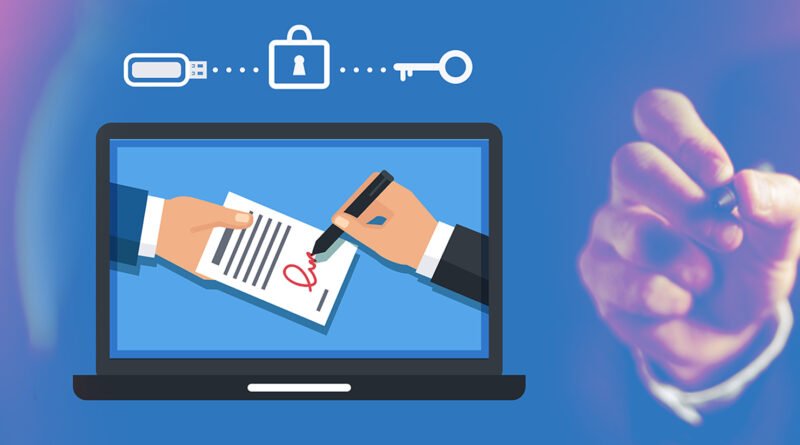8 Measures That Your Department Can Take to Secure Digitally Signed Files
Digital signatures in Public Key Infrastructure (PKI) format offer the best level of security. These signatures consist of coded messages. They can associate a signer with the document. Thus, they are also known as electronic fingerprints.
Many public and private sector organizations have adopted digital signatures. Why won’t they? Digital signatures offer multiple benefits. Today, legal, healthcare, financial, insurance, and other diverse sectors have implemented the technology.
With e-documents, several companies are striving to achieve their paperless office dream. Such software has introduced convenience and unprecedented levels of productivity. But, the data breaches and hacking threats are keeping everyone on guard.
You certainly want your firm or department’s digital documents to remain protected.
Here’re elements that can offer an added layer of security:
Timestamping
A digitally authorized timestamp is like a certificate. It indicates the genuineness of the file content. The timestamp shows that the system has verified the agreement or document. It also certifies that no one made changes in the same after signing.
These stamps are generated by certification software that’s a part of most digital signature systems. Timestamping is crucial to ensure all the documents in your office remain untampered.
Embedded audit trail
You can add a crucial layer of security to your business if you can verify and archive signatures.
You won’t have to depend on third-party software or service if the digital signature solution embeds the signature directly in the document. Such records remain free from the influence of even the signature system vendor.
You have complete control over all the documents and records. You can retain access to data even if you change the signature software provider in the future.
Compliance auditÂ
Compliance audits happen to be one of the crucial procedures for controlling risks. As a part of these audits, external and internal entities conduct reviews. The exercise aims to check how your business adheres to industry or location-specific requirements and regulatory guidelines.
Businesses have to provide details for various processes. Auditors verify documents as well as agreements for transactions. Thus, while choosing a digital signature software, ensure the system offers an audit trail for the signing process.
Compliance audits help in proving that your organization completed the business interaction online. It has satisfied your business audit.
If your company falls under regulatory oversight, the process is necessary. It is always better to ensure you have all your bases covered.
Adding PINs, passwords, and codes to documentsÂ
These factors offer a basic level of security. Yet, they can make things deceptively complex for hackers.
Assigning codes, passwords, and PINs to documents ensures the signee that they are genuine and sent by the document owner. It assures the involved parties that there is no chance of document tampering at a later stage.
Handling signed documents with an automated process
Manually storing and tracking signed documents increases the chances of errors. Plus, you can end up violating compliance mandates. On the other side, setting an automated process for storing and monitoring signed files reduces the chances of error.
You can use signing workflow software for creating tailored workflows. The software makes a path that document owners and signees, and office workers need to follow. Such a system helps in managing document lifecycle with ease.
ECM or electronic content management systemÂ
ECM software programs can assist in managing business documents. The software helps organize, store, index, and share content most securely.
ECM offers real-time reporting and audit trails crucial for tracking suspicious behavior.
The system can optimize digital file security and maintain the integrity of documents. There’s almost no human intervention.
Explore the legal framework
Some laws do not perceive digital signatures as appropriate for specific situations.
They may not be valid in certain court case filings, family law matters, and estate documents. They are also not legal for specific foreclosure notices, safety recalls, life insurance benefits, etc.
In some situations, a notary or multiple witnesses need to validate various forms of e-signatures. Thus, the document processing team should know the legal framework if they deal with such files. It can help in avoiding the last-minute rush for validating the documents.
Create your compliance checklistÂ
You want signatures on your e-documents to be considered valid for business processes. So, the last yet most crucial step is ensuring all the signatures comply with regulatory requirements.
The digital signature software must follow GPEA, UETA, ESIGN, eIDAS, and local regulations.
Your department or organization must first collect intent to sign from signees.
You must also have a letter signaling their consent to do business electronically.
Conclusion:
Don’t wish to spend a fortune on digital signature systems? Some documents do not need digital signatures; even basic e-sign can work. You can also find highly secure, free eSignature app companies like GoSigner. You can put in place the same security measures and protect e-signed documents.
Digital signatures use a specific technology that takes them a step ahead of elemental electronic signatures. The integrity and authenticity of the digital document, software, or message get validated with mathematical techniques. So, your records remain safe. But, adding the above measures can keep your department a level up on document safety.




